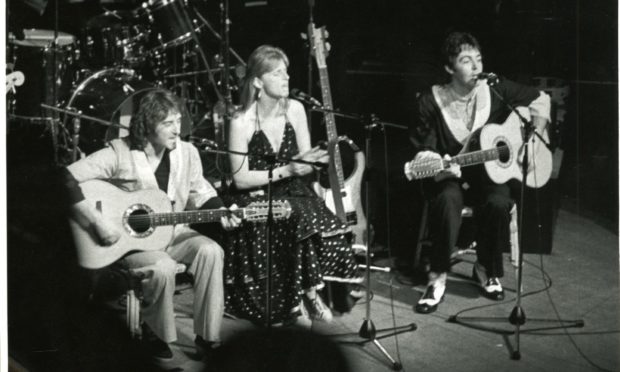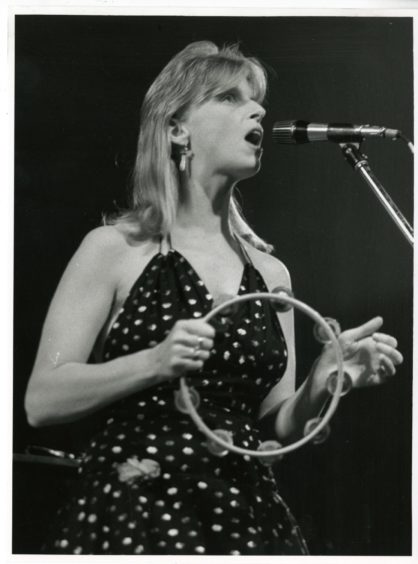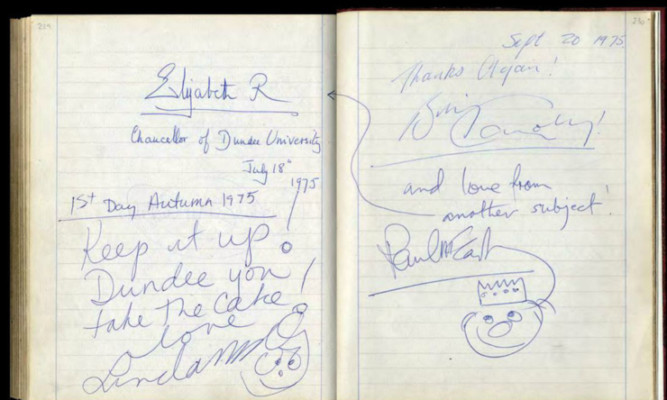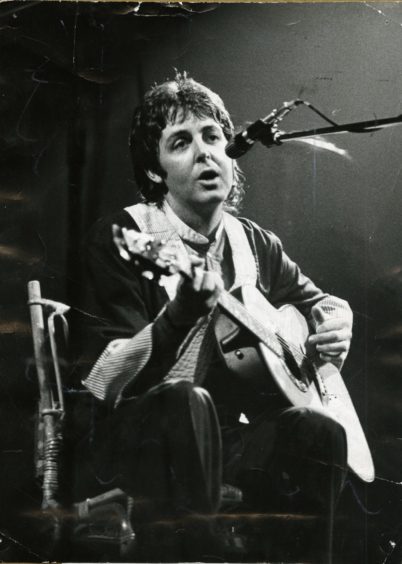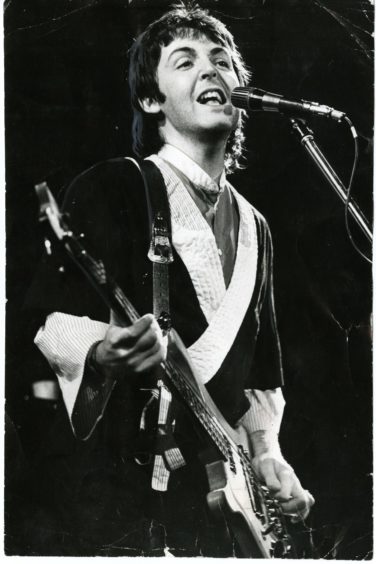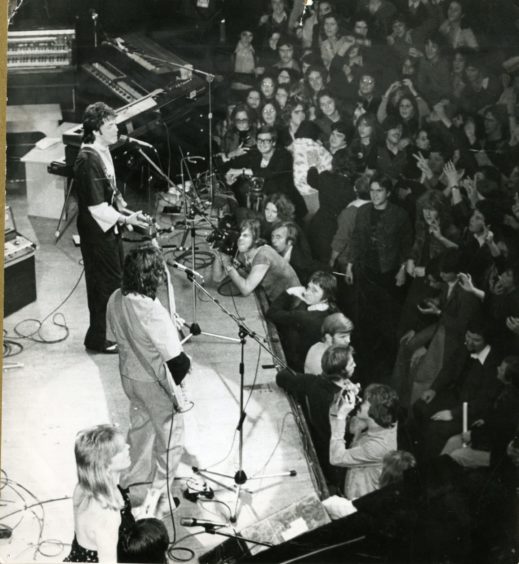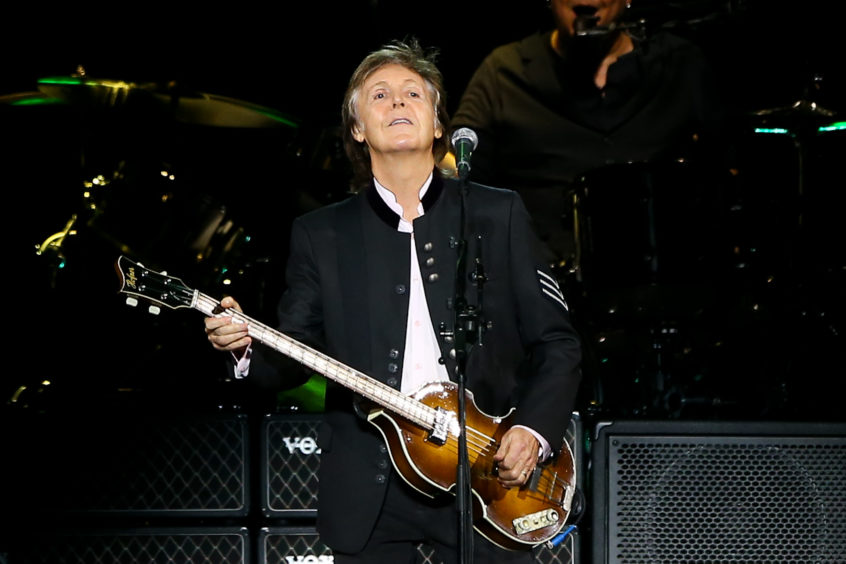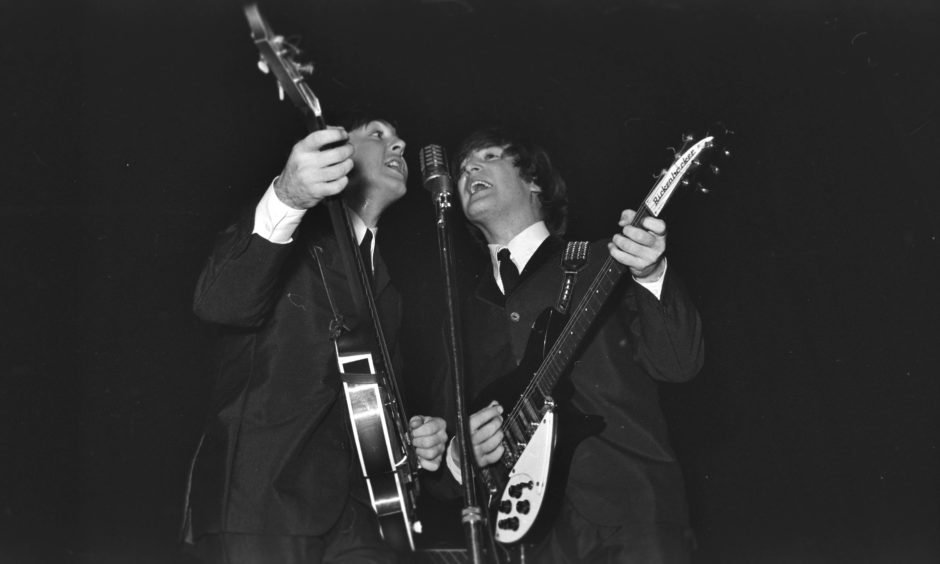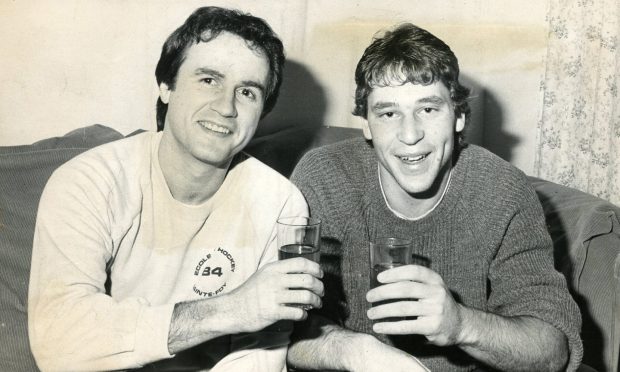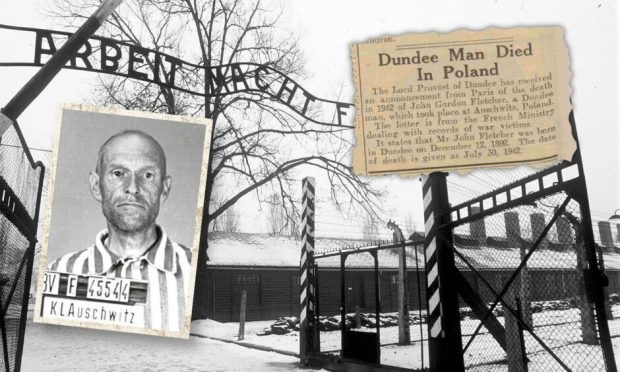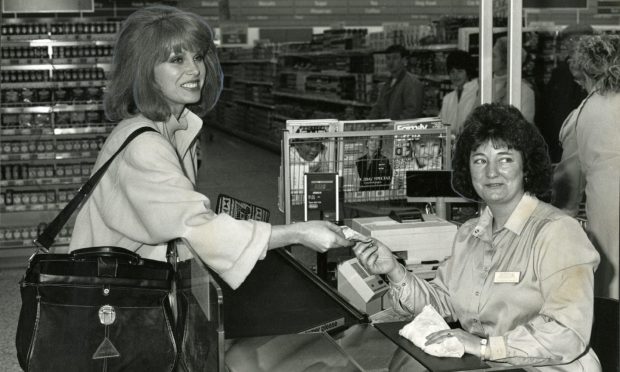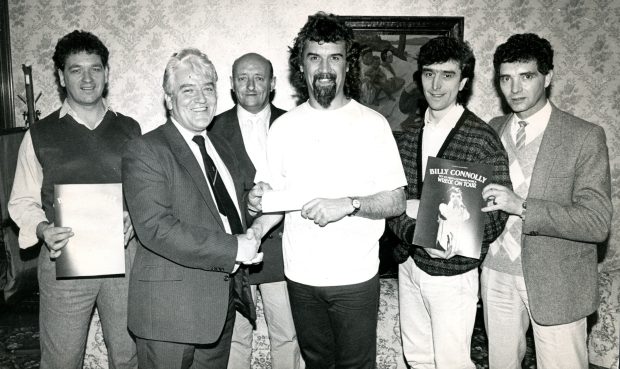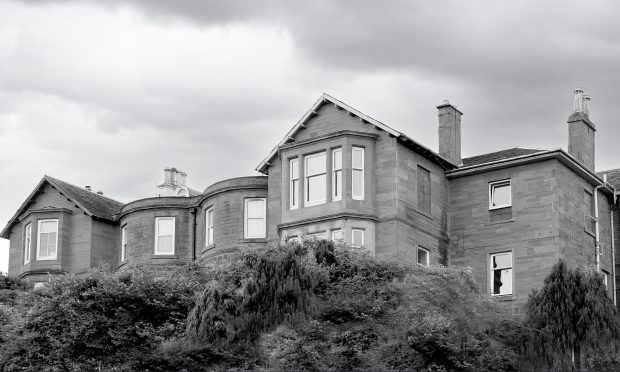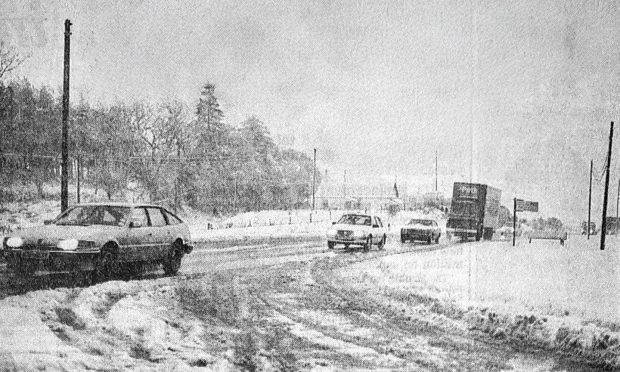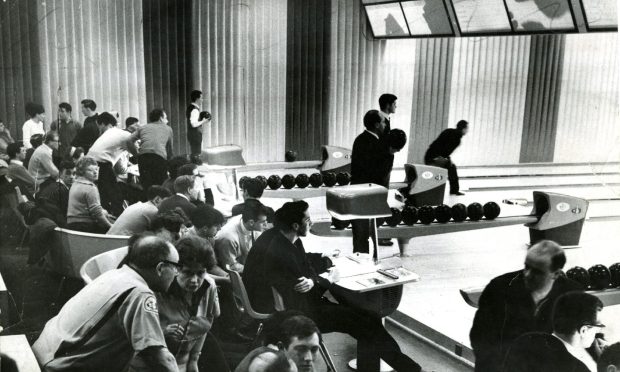It was the night Paul McCartney made sure there was plenty of Dundee cake on hand to celebrate his wife Linda’s birthday.
Ex-Beatle McCartney performed at the Caird Hall with Wings 45 years ago with tickets £1 and £2.50 as part of the band’s Wings Over the World tour just a day before Linda turned 33.
At the end of the show, a large cake was wheeled on stage while the brass section of Tony Dorsey, Howie Casey, Steve Howard and Thaddeus Richard played “Happy Birthday” in a New Orleans-style arrangement.
Linda left a message in the Caird Hall autograph book after the gig which said: “Keep it up Dundee, you take the cake!”
The group arrived at the venue just a few weeks after the Queen Mother, then the Chancellor of Dundee University, had signed the Caird Hall autograph book.
McCartney drew a face with a crown and the message “and love from another subject,” with an arrow pointing towards the signature of Her Royal Highness.
Following the Wings album, Band on the Run in 1973, the band had released Venus and Mars in 1975 and were working on Wings At The Speed of Sound when they embarked on the tour which included 16 UK dates, 10 in Europe, 31 in North America, and nine in Australia.
Beatles songs
The set list featured material from Wings’ best-selling studios albums as well as some of McCartney’s compositions from the Beatles era, including Yesterday, Lady Madonna and The Long and Winding Road.
McCartney performed Beatles songs on the UK leg of the tour for the first time since the band broke up in 1970.
The Evening Telegraph review following the Caird Hall date on September 23 1975 said the gig “must rank as one of the best shows on Tayside for some time”.
It read: “All credit to McCartney for not resting on his laurels as an ex-Beatle but getting out and playing to the fans who have been with him since the early sixties.
“Tracks from Band on the Run and Venus and Mars were greeted with the type of reception accorded to returning prodigal sons.
“But the highlights must have been the golden oldies.
“Yesterday, Blackbird, The Long and Winding Road and Lady Madonna were all brought out of the cupboard, dusted down and given a new lease of life.
“Like all good pop songs, they’ve stood the test of time.
“It was a pleasure to hear them sung by a real rocker and not some night club plagiarist.”
Camera crew
There was a camera crew following Wings in Dundee with the Scottish shows caught on film and included in a documentary they were making.
Aside from McCartney, the line-up of Wings included Linda, Denny Laine, Jimmy McCulloch and Joe English.
“Well, this was the first time we started playing The Beatles songs again,” said McCartney.
“So, I think, from the tours before it had been mostly Wings songs.
“Wings had been becoming Wings.
“And then on this tour, everything sort of exploded.
“Previously all of the efforts had been to establish Wings and to make something that wasn’t like a Beatles tribute band.
“But once we had a few hits with Wings – and Band on the Run was a really big hit album – we had some of these hits in our repertoire, and it did feel like, ‘Oh, it’s okay, now we can do Beatles stuff!’
“And it was quite a relief in a way because I’m always sort of conscious of what the audience wants, because my audience isn’t a narrow audience, it’s quite a wide group of people.”
Songwriting partnership
McCartney and John Lennon had slowly re-established their relationship following the break-up of The Beatles.
Things gradually defrosted after McCartney and Lennon got together in New York in 1972, when Lennon resided in the bohemian Greenwich Village.
Both men were keen to renew their songwriting partnership.
Lennon talked at length to then-girlfriend May Pang about the idea, while Linda intimated that a collaboration would have proved beneficial.
An invitation for Lennon to visit McCartney in New Orleans while recording Venus And Mars was the closest they came in 1975.
McCartney said: “It would have been great to get The Beatles back together again.
“People always say what if?
“But we can’t, so sadly, that’s not going to happen.
“If by some strange fluke it was to happen, it would be beautiful.
“But do you know where it does happen? In my dreams.
“As a musician, you often have dreams about being in the studio or on stage so I’m often with the guys.
“Just the other morning I woke up and I was with George. And that was very nice.
“That’s how I run into John and George these days.
“So The Beatles have reformed. In my head.”
Solo work
McCartney returned to solo work during the 1980s, and was inducted into the Rock and Roll Hall Of Fame as in individual in 1999.
The Beatles were inducted in 1988.
His revered status has at times placed his personal life under scrutiny.
Following Linda’s death in 1998, he married the former model and anti-landmine campaigner Heather Mills in 2002.
It ended in a highly publicised, acrimonious divorce six years later.
He married his third wife, Nancy Shevell, in 2011.
The musician remains a venerated figure and continues to perform and produce new material.
His latest album, 2018’s Egypt Station, was warmly received by critics and topped the charts in the US.
The band’s biggest hit was a love letter to the place where McCartney found peace
Wings biggest hit was released two years after the Dundee concert.
Mull of Kintyre topped the festive chart and the bagpipe sounds of the Campbeltown Pipe Band memorably accompanied the track which was written in tribute to the picturesque Scottish peninsula where he owned a farm.
He previously said his late first wife Linda “was in love with the whole idea of Scotland.”
“She said, ‘You’ve got a place in Scotland, haven’t you?’
“I said, ‘Yeah,’ so she she said, ‘Let’s go’. So, OK, we went up,” he said.
“I love the place. We spent a lot of time there and we raised our kids there.
“Years later I was thinking there hadn’t been any new Scottish songs – all the songs the Scottish pipe bands play are old songs – I could not think of anything that was a new Scottish song.
“So I thought, well maybe I should try and write one.
“I knew Campbeltown had a pipe band, so I said let me get in touch with the leader of the pipes and talk to him.”
McEwan’s to celebrate
And when the Campbeltown Pipe Band got to play the song, he was amazed.
“They started playing. It was a fantastic sound, a very emotional sound. Loud, very loud. In a few takes they had it,” he said.
“I said one thing. I know these guys liked to drink so I said we won’t drink before the session because it could go horribly wrong.
“Let’s break out the drinks when we got the take. So sure enough we got this great take – its the one you hear on the record – so we broke out the McEwan’s, the beer.
“So we were all having a celebratory drink. They were all standing around beaming – they had not been in a recording studio before.
“They were all loving this whole track coming out of the speakers. It was a fantastic evening as you can imagine.
“Everybody got very merry and very happy with the results.”
McCartney magic in the north-east
Paul McCartney made several trips to Scotland in the 50s and 60s as The Beatles went from unknowns to the biggest stars in the world.
Richard Houghton, author of The Beatles – I Was There, spoke to more than 400 people lucky enough to see the group to record their memories for his book.
Two Red Shoes, Elgin, January 3 1963
Arthur McKerron used to go to the back café of the Two Red Shoes for a meal. He asked the owner’s wife who was performing in the dance hall that night and she replied it was “some group called The Beatles”.
“The place was deserted,” Arthur recalled.
“One couple were more or less just walking or jiving around the hall and three or four couples were sitting at tables.”
The next day student nurse Adeline Reid and her friend were leaving their boarding house to go to the local hospital when she saw The Beatles hanging out a window of the boarding house next door.
“They shouted at me,” Adeline recalled. “John asked me to take his pulse. My face went the colour of a tomato.
“Our landlady proceeded to reprimand them for their cheek. She did not approve of them talking to her girls in such a shocking manner!”
Town Hall, Dingwall, January 4 1963
The Beatles were in direct competition to the weekly dance in the Pavilion in Strathpeffer. There was only going to be one winner – and it wasn’t the Fab Four!
“The few that were there, including my crowd, all shared a taxi and headed to the Strath,” said Doreen Douglas.
Billy Shanks, then 17, recalled: “The funny thing is that when I went in, the doorman said, ‘Before you pay, go up and have a listen’.
“They played Love Me Do when I looked in the door and I thought, ‘No, no, it’s not my type of music’ and went to the local village hall five miles away to hear The Melotones.”
Margaret Paterson was 17 and going on her first date with her late husband Tommy.
“I thought he had stood me up,” she said. “It was almost over when Tommy’s friend remembered to tell me to go to the Strathpeffer gig and Tommy would meet me there.
“I sat on the stage all night chatting to The Beatles and Paul in particular, who told me not to be upset as there were more fish in the sea than ever came out of it.”
Beach Ballroom, Aberdeen, January 6 1963
Bill Cowie, 15 at the time, and his brother Mike turned up early, so knocked on the stage door and were invited in to meet them.
“They were tuning their guitars and discussing their playlist,” Bill recalled.
He requested Chuck Berry’s Sweet Little Sixteen, which John later dedicated to the “lads in the front row”. After the first set, Bill and Mike went back to the dressing room and Paul offered them a cup of tea.
Afterwards, Kathleen Donald, 15, and her friend Pat Masson knocked on the dressing room door for autographs.
“When I got married and left my parents’ home, my mum had a clear-out and threw away the autographs,” Kathleen said. “Can you imagine? When I tackled her about it, she said ‘Oh, it was just a few names on a bit of paper’.”
Caird Hall, Dundee, October 7 1963
“I worked for Dundee District Council for 35 years and early in my career our office was situated behind the Caird Hall stage, with a door accessing the stage,” Daniel Ferguson said.
“When The Beatles came to Dundee we were able to hear them practising from the office.
“Later in the afternoon came a knock on the common door and who should come into our office but Paul. He asked us if he could use our phone and sat for quite a while chatting away. We could hardly believe it!”
The show was 15-year-old Morag Thompson’s first concert. Her pal worked next to the box office, so was able to get them front-row tickets.
“We came out in a daze and our ears ringing,” Morag said.
“Next morning there were photos of the audience in The Courier and the girl sitting next to me was screaming her head off. My parents were horrified but I didn’t let on that I was next to her and in a similar state.”
Caird Hall, Dundee, October 20 1964
Donald Stuart said: “My group, Tommy Dene and The Tremors, supported The Beatles and, after playing, we had to act as stewards at the foot of the stage. I was in front of John Lennon and I heard their playing, despite the screaming!”
